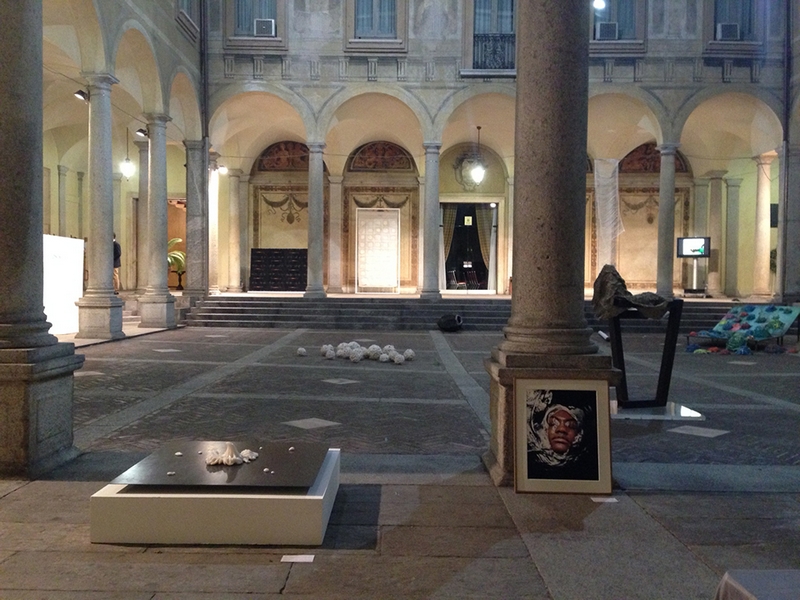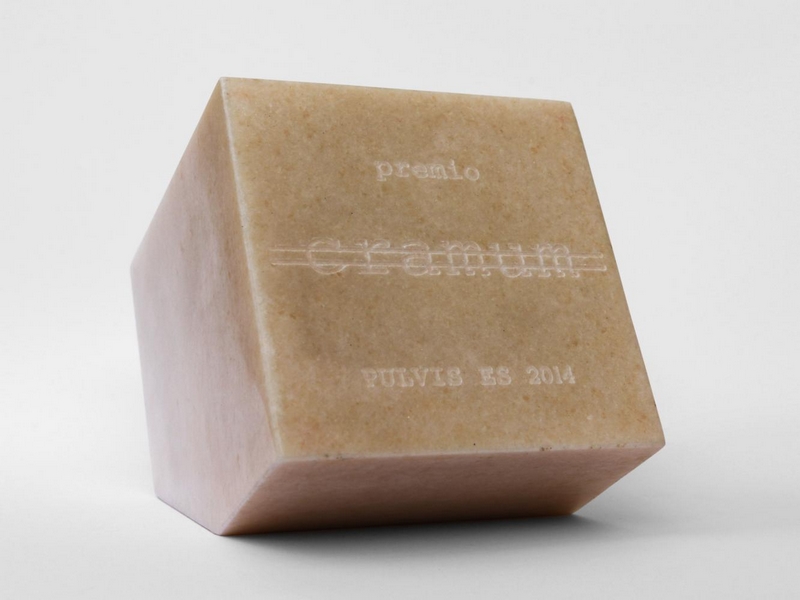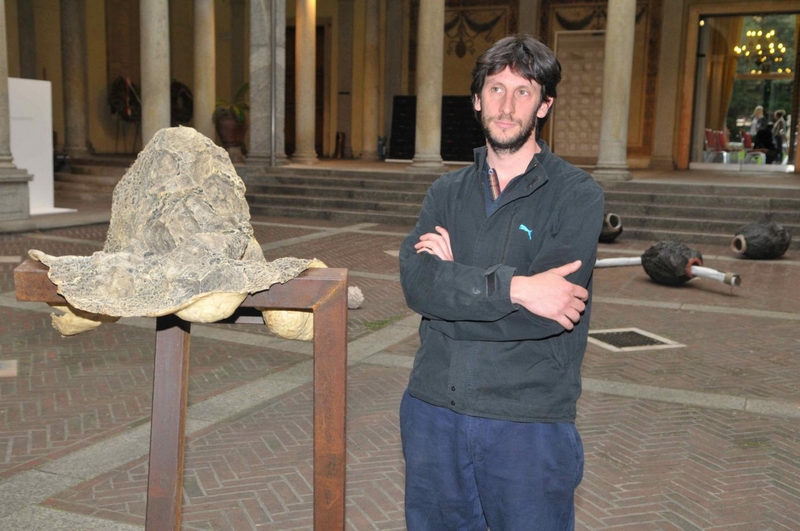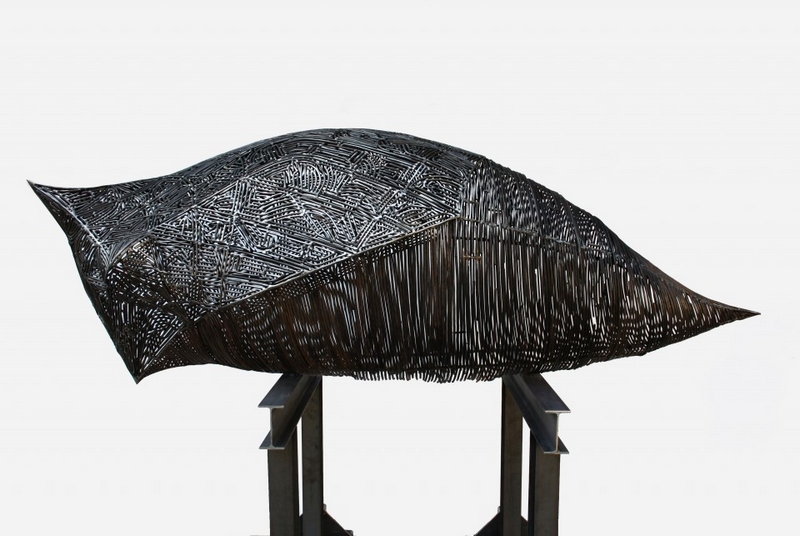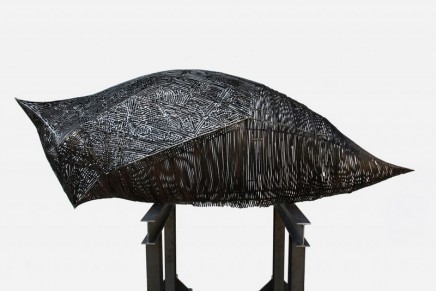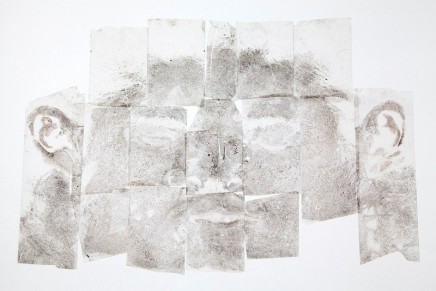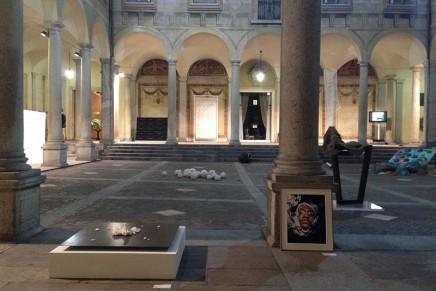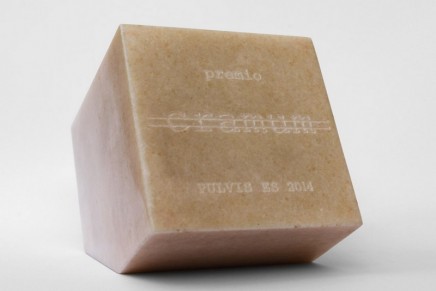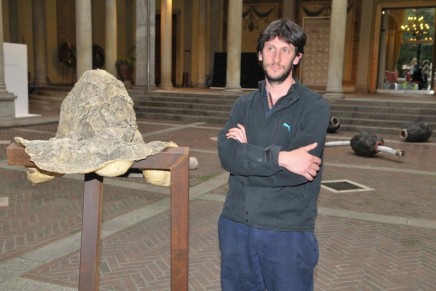” The most successful artists in today’s global network are those who communicate their work most effectively, cutting across traditional boundaries and pushing through the elite structures of a closed ‘art world”. Katie Hill
At Palazzo Isimbardi (Milan), from 10th to 20th May, 2016, cramum Association and Giorgio Pardi Foundation present the collective exhibition “A chi parla l’arte contemporanea?” (Who does contemporary art speak to?), heart of the 4th cramum Prize thought by Sabino Maria Frassà together with Andi Kacziba.
“Who do we speak to everyday? Who do Culture and contemporary art speak to? These are days when young people’s uneasiness becomes clear. It finds expression in a strong identity crisis and in a growing desire to be understood and communicate in a world that is getting more and more unstable and complex,” says Sabino Maria Frassà, General Secretary at Giorgio Pardi Foundation & Creative Director at Cramum.
“The 25 works exhibited tell how difficult it is to communicate in a world so rich in information, where speed and first impression play a more and more important role. The difficulty grows when contemporary art is to be approached. The cramum prize faces this problem and tries to give voice to the best young artists in Italy. Their works are exhibited near the ones of better known artists and they are given the chance to improve their artistic talents not only through exhibitions and catalogues, but also through coaching and contacts”.
This year, internationally renowned artists such as Ulla von Brandenburg, Szilárd Cseke, Emilio Isgrò, Andi Kacziba, Lin Ylin, Urs Luthi, Luigi Presicce, Laura de Santillana, Paolo Peroni, Francesca Piovesan have been placed side by side with 10 under-36 artists (prize finalists) who are starting their artistic career with cramum Association. They are Gianluca Brando, Gianni Colangelo, Max Coppeta, Flora Deborah, Donatella De Rosa, Isabella Fabbri, Matteo Fato, Fabrizio Milani, Giuliana Storino, Kwanghoo Han. Among them, on the opening day ( 10th May) , the panel of judges will vote the winner who will have two years to prepare his/her own personal exhibition in Milan.
The cramum Prize
Cramum is a Latin word which means cream, the best part of milk. The cramum prize was thought by Andi Kacziba and Sabino Maria Frassà in 2012 to support the best young artists in Italy, regardless of their origins.
The plague in Italy is not only the brain outflow, but also the difficulty to attract new brains from abroad. Giorgio Pardi Foundation and cramum Association have immediately supported the project as they have understood its importance and appreciated its second aim, that is to bridge the generation gap. The prize, in fact, puts in contact different generations of artists.
The winners of the previous editions were: Daniele Salvalai, Paolo Peroni and Francesca Piovesan. The first prize winner will be awarded a cube made of Candoglia Marble by the Veneranda Fabbrica del Duomo di Milano. Besides he/ she will have the possibility to organize a site-specific exhibition in Francesco Messina Museum Studio in two years’ time. In May 2016 Paolo Peroni will open his personal exhibition “Orizzonti a parte” (11th – 29th May , 2016 – organizer Sabino Maria Frassà, Francesco Messina Studio Museum ).
The exhibition is accompanied by a valuable issue published by SKIRAA and edited by Sabino Maria Frassà, entitled “A chi parla l’arte contemporanea?”. The book does not only collect the works exhibited but also critical reflections by members of the Jury, including Nushin Elahi (editor from South Africa), Katie Hill (Oxford University Professor), Angela Madesani (academic at IED and BREA), Alba Solaro (journalist) and Nicla Vassallo (Genoa University Philosopher).
“Who does contemporary art talk to? To a very small section of the world population. And it has always been so. Most people do not even know that art exists,” says Angela Madesani in a passage of the book.
The 10 internationally renowned artists selected by the organiser Sabino Maria Frassà:
- Ulla von Brandenburg, German artist (Venice Biennale, 2009), focuses her artistic research on the difficulty to trace her identity;
- Szilárd Cseke, Hungarian artist (Venice Biennale, 2015), investigates the role of economy and globalization
in contemporary society; - Emilio Isgrò, conceptual artist, among the most famous in Italy, has taken part in numerous Venice Biennali
(1972, 1978, 1986,1993); - Andi Kacziba, Hungarian artist, examines the role of women with her textile sculptures;
- Lin Ylin, Chinese artist (Venice Biennale, 2015), thinks that art has a social role as stimulus and catalyst
of change. - Urs Luthi, Swiss artist (Venice Biennale,2001), has made his body the subject and object of his own artistic
reflection; - Luigi Presicce, Italian artist, famous for his performances which are reflections about art and painting;
- Laura de Santillana, Italian artist (Venice Biennale, 2009), world famous for her glass sculptures that
reflect the vacuity of human existence; - Paolo Peroni, winner of cramum prize in 2014, has always been thinking about the difficult balance and
dialogue between man and the world, which he transforms to live in it. - Francesca Piovesan, winner of cramum prize 2015, focuses her work on time and her own transformation.


